Chip Theory Games sets out to bring high quality education games for kids. These games include concentration, logic, geometry, and more. Octo Grabbo uses chopsticks to grab food tokens, Bear in Mind is a competitive memory story telling game. Woodland Rush is a race to do as many competitions as you can within the time limit to gain points. These 3 games are competitive games, where players play against each other, and range from ages of 4 on up and take 10-15 minutes to play. See below to check out the review of each game.
What’s in the Box?
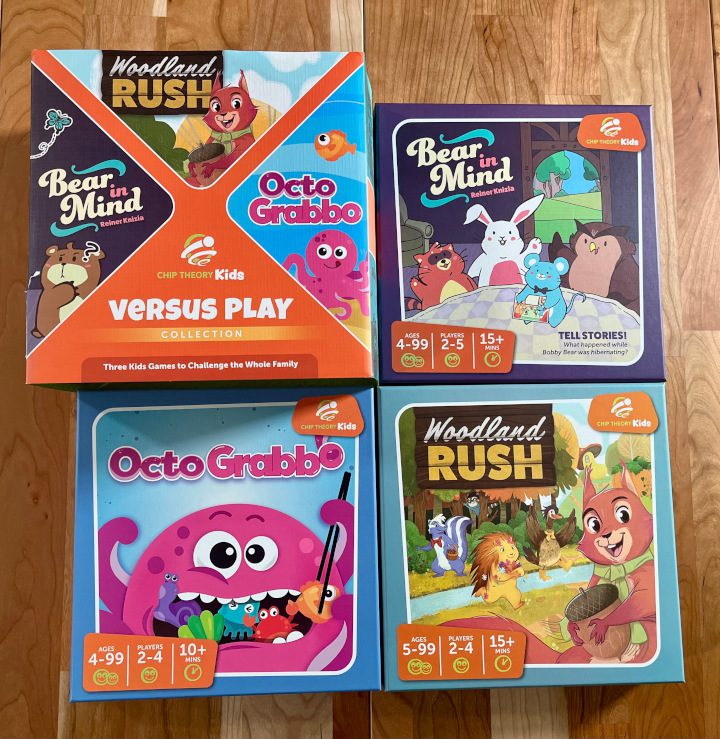
Bear in Mind
- 5 Large double sided and dual pictured story tiles
- 40 Small image tiles
- 1 6-sided Die
- 1 Confused Bobby Bear Pawn
Octo Grabbo
- 4 Sets of chopsticks of different colors
- 4 Octopus chopstick helpers
- 4 Shell player boards
- 44 Cards
- 20 Food Tokens
- 1 8-sided Die
Woodland Rush
- 1 Creature Dens Board
- 1 Sand Timer
- 6 Tree Blocks
- 4 Animal Pawns
- 8 Food Tiles
- 110 Cards
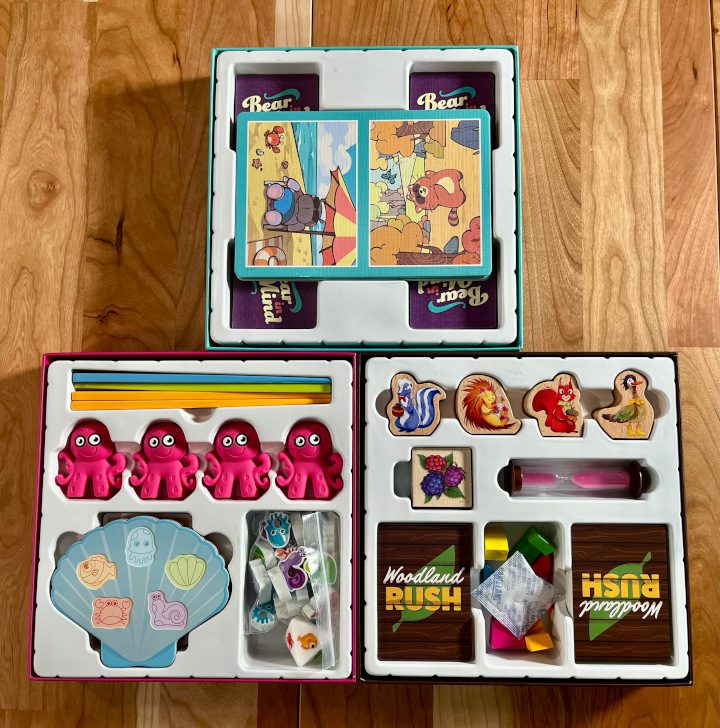
How’s it Play?
Bear in Mind
This is a memory story telling game. The 5 large story tiles are placed out in a line so 5 images are facing one direction, and the other 5 are facing the other direction. Players then take turns flipping over the small image tiles one at a time, and when flipping one over, they match that image tile with one of the pictures on the story tiles, and tell a small story about how they mix. After all players have taken turns placing these tiles on and all images on the story board are full with tiles, then a player places Bobby Bear randomly on one of the images.
The youngest player then rolls the die, moves Bobby Bear the number of spaces shown on the die, and then they need to recall the story (or at least the image) shown on the image tile. If they do, they gain that tile and draw a new image tile from the stack to tell a new story with the same picture on the story tile, but now matching the story with the new image tile. If a player doesn’t remember the image or says the wrong image, then after looking to see what the image it, it remains face down until it comes up again.
Once the pile of image tiles are gone, then you continue moving Bobby Bear and guessing the image tiles until someone moves Bobby Bear to a picture where there is no image tile present. At that time, the game ends and the player with the most image tiles wins the game.

Octo Grabbo
This is a dexterity game where you use chopsticks to collect food tokens to place on your player board. There are two ways to play this game, the basic version using the die, and the TurboGrabbo where you use the cards.
When playing the basic OctoGrabbo, on your turn you roll the die, and collect that type of food from the box that is full of food tokens. The goal is to collect one of each food type, and the player who first does this wins the game. There are 5 food types which count toward 5 sides of the die. The other 3 sides include a net where you get to pick any food type you’d like. The Shark where you remove a food token of your choice from your player board back into the box. And, the sneak octopus that lets you pick up any food token from another player’s player board. The player who first fills in their 5 spaces on their player board wins the game.
The TurboGrabbo version is more of a “free for all” version of the game. A player flips the top card over and all players try to collect the food types shown all at the same time. The fastest player to do so wins the card. Everyone puts all their food tokens back into the box lid and flips over a new card and race to collect those food tokens. The first player to collect 5 cards wins the game.
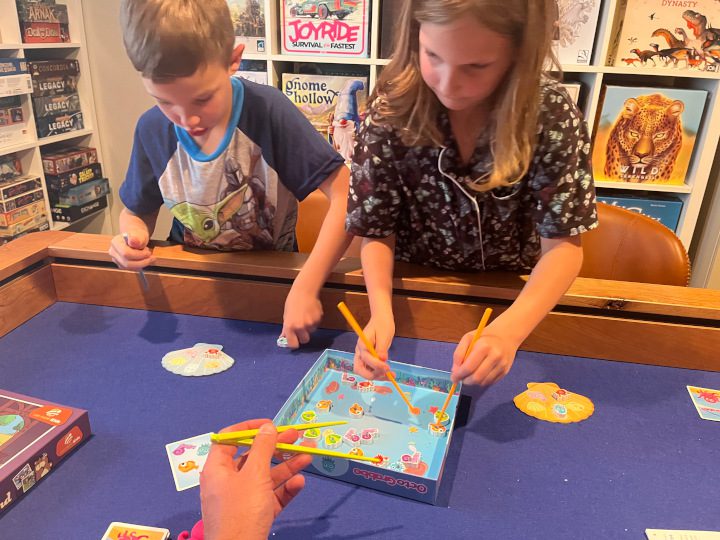
Woodland Rush
This is a game with a mix of mini games that require dexterity, quickness, some luck, and some fast acting. The components all have a home for where things are setup and on your turn you flip over the timer, flip over a card from the deck and perform it’s action as fast as you can. This continues until the timer is up.
“Go Home!” cards have you move the animal pawns to the numbered den shown on the card. “Pine Tree” cards have you build a tree with the tree components matching the colors shown on the card. “Food Match” cards have you flip over 2 tiles at a time form the 8 possible until you find the matching food shown on the card. “Hide-and-Seek” cards are for all players, and the first person to grab the missing animal that’s not shown on the card will win that card. “Funny Face” cards have you perform that funny face. “Animal Action” card requires you to do the shown action. “Sand Timer” cards let you gain a special power where you can place this on the bottom of the deck to flip the timer over and continue playing your turn for a longer amount of time. “Caterpillar!” cards give you 1 negative point, no action required. “Bonus” cards give you 1 extra lead without needing to do any action. “Raccoon Robber” cards allow you to take any card you’d like from someone else’s pile of cards.
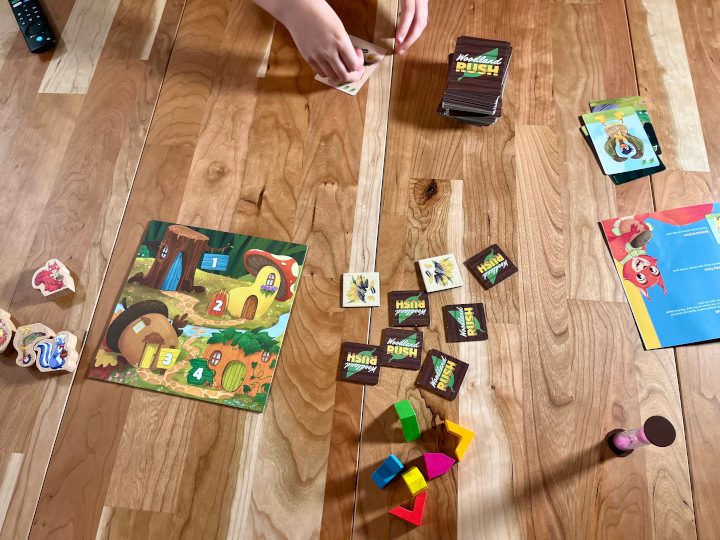
You continue to do whatever you can with the time allotted to you, and you gain the cards you successfully complete. After time runs out, the next player goes and flips over cards. Each player has a set amount of turns determined by how many players are playing the game, and then after players counts the leafs shown on their cards, and the player with the most leaves wins the game.
The Verdict
Bear in Mind
This is my kids favorite game of the bunch. Memory is usually not the best mechanic used for games, as it always comes down to the player who has the best memory. But Bear in Mind adds a story telling element that gets the littler players more invested and involved in the game. They come up with the weirdest stories that sometimes they remember, other times they don’t. But, kids love being creative, and they laugh at each other stories, but then test their own memory skills with all the wacky stories that have been spoken.
There are 10 pictures on the story tiles you need to remember at a time, but as the game progresses, the stories matching these pictures also change. I always try to continue the story with the new tile, but the kids have their own strategies as to what story is told, and how the image mixes in with the picture on the story tile.
Overall, this game is for the more creative players. Players who might not want to be as competitive, but want to impress others with their crazy stories. There are 40 different image tiles, and you wont use all of them every game. The story boards can also be flipped over to add different pictures to have more variety of stories that come to life.
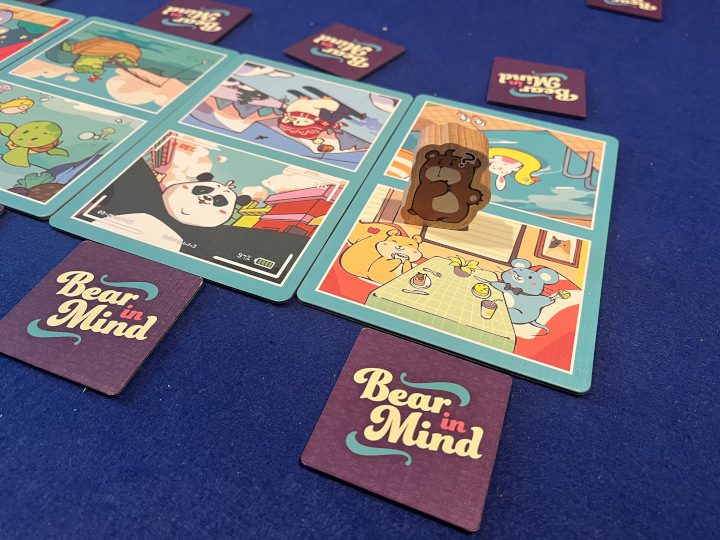
Octo Grabbo
This game is a dexterity game where the skill greatly depends on a player’s age, and how well they can use chopsticks. For example, I use the chopsticks without the helper, and can pick up the food tokens very quickly. My kids, on the other hand have a card time even with the helpers as the chopsticks tend to slide past each other because they press them together too hard.
The two version of play do make for different levels of play. The basic game is to use the chopsticks, but not in a way that you have to hurry or feel rushed. It lets the little ones take their time, and enjoy the experience of this dexterity game. The other version is more chaotic, and cut-throat. You are racing to get what you want before all others, and really show off who can use those chopsticks the best.
Overall, this game is for players who want to race, use chopsticks, and compete against each other. It’s a very hands-on game where you use your hands to beat everyone else with the task at hand.
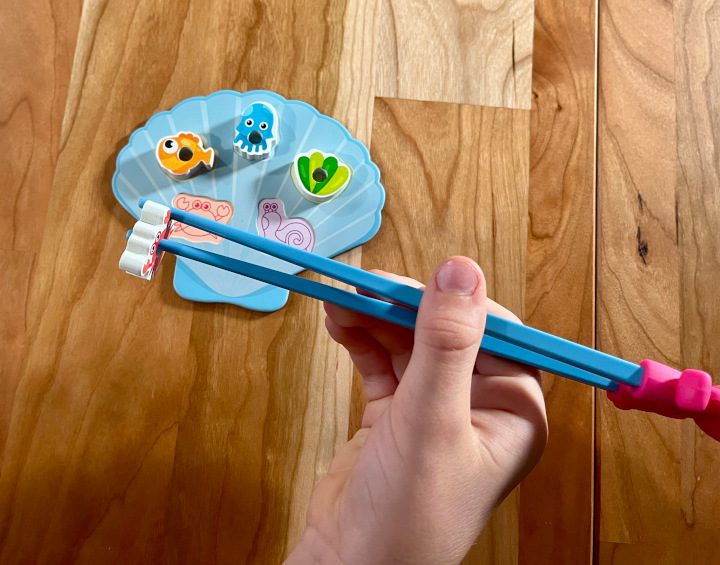
Woodland Rush
This is my favorite game of the bunch. You have a good variety of different actions to perform, which requires paying attention and doing the task at hand. All other players also still need to pay attentions because the hide and seek card can show up at any time, and you can win those cards on any player’s turn.
The variety of the mini games are fun, there is enough small and easy actions that the little ones don’t feel like they are difficult, but then the other ones might reward you with leaves, giving you more points than the easy actions.
Overall, this game is for players who like to compete against the other players, but also to do so while all other player watch them. All other players watch and maybe even learn how to do the actions better, or they might just be entertained by the silly faces and funny movements the active player is doing.

Each game includes high-end components that is very important to Chip Theory Games. The game boxes are all the same size, and came to me in a sleeve with all 3 games included. I was a little disappointed that none of the games used chips for their components, but that might be for a future Chip Theory Game.
Images via Chip Theory Games
Have strong thoughts about this piece you need to share? Or maybe there’s something else on your mind you’re wanting to talk about with fellow Fandomentals? Head on over to our Community server to join in the conversation!

